
Some things get started without direction, while internally recognizing the urgency of doing them. Others have their goal identified from the beginning, giving direction to all the work. However, when creating an artistic process on immigration and cultural, local and community identity reconciliation, it must be charged with a different level of awareness, passed through experience and memory.
I’m a migrant artist. I have lived in Costa Rica for eight years. I’m also a woman who migrates, which is different from a man who migrates.
Many migrant women end up being part of domestic service, without social guarantees, because not having papers, they don’t have job options. I’d like to give statistics, have references, but now the only thing that comes to mind is the conversation I had with other migrant women at a presentation I made in the Monte Alto squatter village (Concepción Abajo de Alajuelita).
They expressed how illogical the system is: it’s easier for a woman in Costa Rica to obtain residency by marrying a Costa Rican or having a baby than by other means, because there are many obstacles.
From there, from my experience, from what my migrant friends in Costa Rica tell me, from listening to these women and other close stories, my desire to put on a show about migration developed. I wanted to share it with both migrants and non-migrants who, in the end, live in areas where there are different migratory realities.
At first, I thought about taking this show outside of the Greater Metropolitan Area.
Last year, I began to decentralize the artistic work I do a little, because it seems necessary to me and because I have realized that the dynamics are different, people receive proposals in a different way, they receive support from local and group organizations. But it’s not easy either. One runs the risk of being seen as an outsider who comes, presents and leaves.
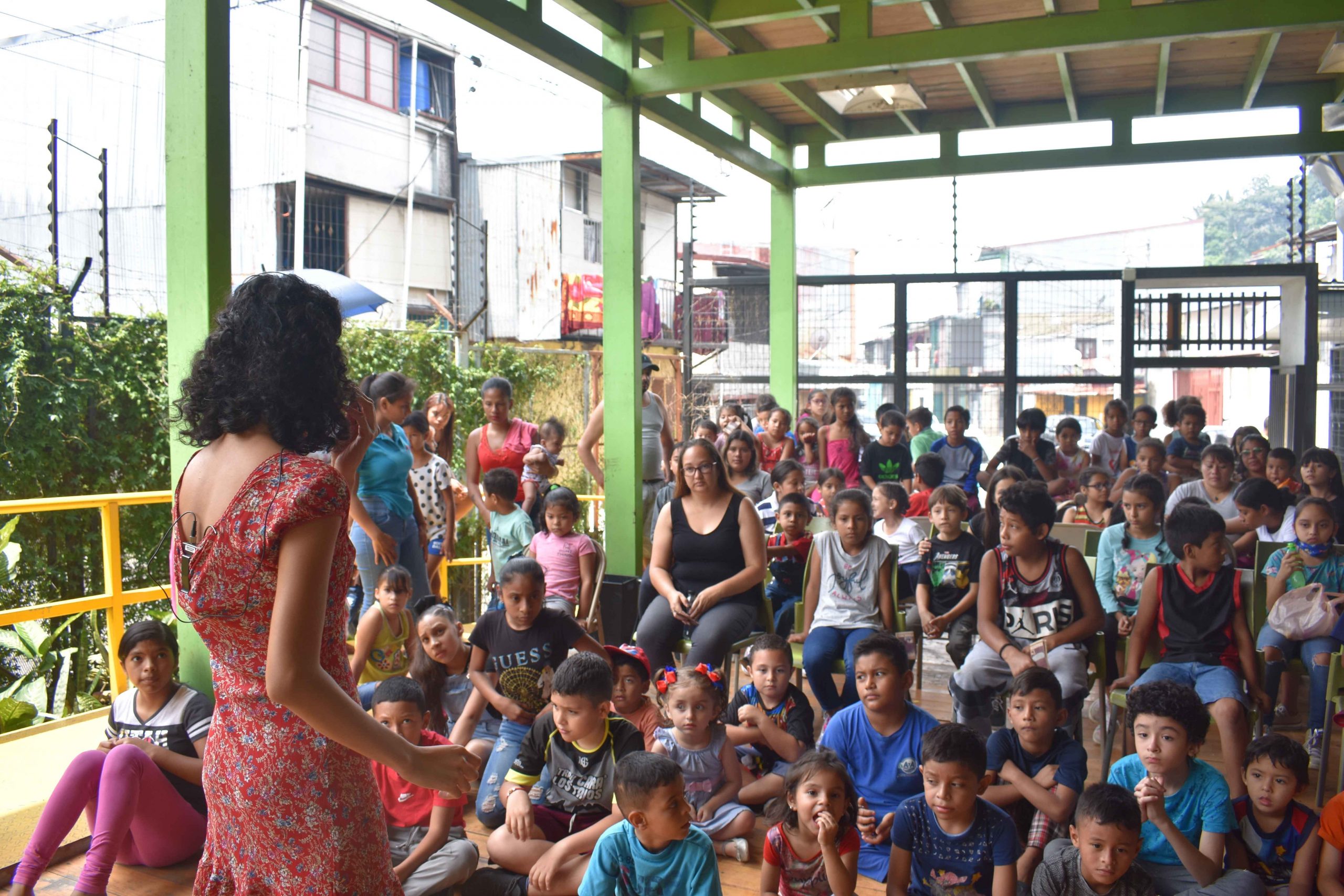
Girls, boys and adults who live in communities with a migrant population watched the show “Cuentos entre pasillos” (Stories Between Hallways), which reflects on migration through stories. Courtesy: Mirella Espinoza
That’s why I first try to get to know the community, talk to its leaders and ask them if they think that presenting these stories there is necessary.
I had in mind that the tour would be in the northern part of the country, in the province of Guanacaste, or other peripheral areas such as Limon. When I contacted the Municipal Center for Migrants in La Cruz, I learned that, really, although migrants arrive in the border cantons, they don’t always stay, because job opportunities take them to other places in Costa Rica.
So little by little, I expanded my spectrum, with the goal of locating areas where all kinds of migrant populations were concentrated: Nicaraguans, Venezuelans, Colombians, even Costa Ricans who had migrated within the same country.
At the same time, I got a hold of an interview with Costa Rican researcher Carlos Sandoval. It caught my attention when he mentions that the La Carpio school is “the largest binational school in Costa Rica and perhaps one of the largest in Central America.”
Binational is, at the same time, an old and a new term for me. I was born in a border community between Ecuador and Peru. I remembered a binational bridge and many people crossing from one side to the other without distinction, but the term also has a more recent meaning from my adult understanding.
For a school, or a region, to be called binational implies embracing the understanding that one can be from two parts and that they are related; in other words, it denies the me perspective in contrast to the others, where the “others” are weird, different, dangerous.
But what’s the reality for La Carpio? I wasn’t going to know until I went there and had contact with the children of migrant families. This made me aware of something else: the importance of raising awareness that minors also migrate, in conditions that are just as dangerous or more so than for adults.
How was I going to be able to cover all of that by telling stories? Could my show, which I named Cuentos entre pasillos, be directed at all ages, in different communities?
I think that has been my main question. If it could be that way and how?
I wanted the show to be built from experiences, but without a painful vision, because the pain is implicit. People who migrate don’t need to be reminded about it.
I found that my way was to exalt memories, the family home, the town and its characters, reconciliation with the land from which one migrates. I wanted my proposal to be different from the artistic expressions or works that I knew about.
For me, the way I found was to tell a story where animals are forced to leave their forest, another story that spoke of a typical character from a community, another about my house, and even a word play about the place where I was born.
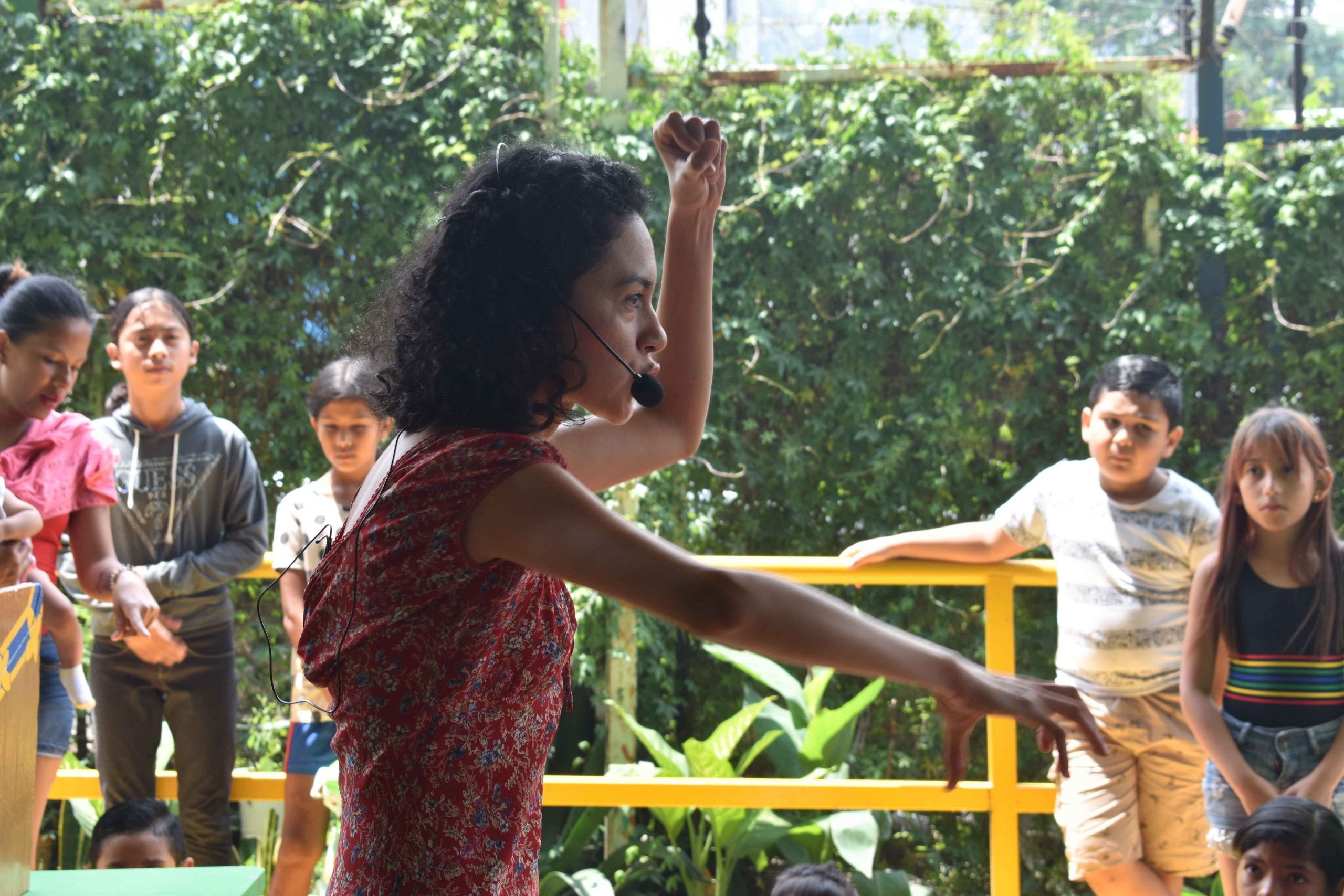
Mirella Espinoza during her performance in La Carpio, San Jose. Courtesy: Mirella Espinoza
From my point of view, migration stories should not abuse the stereotype of stories about migrants. Of course, migration is a reality that shakes anyone, but I think there are other intelligent strategies to address it.
Probably because I approach it as a storyteller, not as a sociologist, nor a psychologist, nor a lawyer, I believe that there is a reality that is many realities at the same time, which can be painful and cause some reaction from the shock that the audience takes, or else hopeful from the sensations or the simplest idea.
Sometimes I started by asking the audience if they had seen the birds in the sky flying together, especially birds that aren’t native to Costa Rica, and that was enough to talk about migration without doing so directly.
Cuentos entre pasillos is the name of the show, but I also see it as something more extensive: a project. In principle, it consists of a storytelling performance accompanied by music by Yurguen Campos.
This year, I won a contest for cultural funds called Proartes, from the Melico Salazar Theater and the Ministry of Culture and Youth, to take it to eight districts with different migratory realities, with the cooperation from managers and community leaders.
The communities were: La Cruz (Guanacaste), Aguas Zarcas (Alajuela), La Carpio (San Jose), Puerto Jimenez (Puntarenas), Cuajiniquil (Guanacaste), Purral (San Jose), Concepción Abajo de Alajuelita and Alajuelita center (San Jose), from the months of September to the beginning of November of this year.
When I mention that it’s also a project, it’s because I want to highlight the enormous work of counting on people, and not just for people. Because it could be a more limited show for people, but, if I was going to take it outside the greater metropolitan area, I wanted to actively involve community leaders or entities that already had a local process.
So little by little, I went from contact with the Municipal Center for Migrants in La Cruz, to CENDEROS (in the northern region and San Jose), SIFAIS in La Carpio, Keme Foundation in Alajuelita, the Network of Nicaraguan Women in Costa Rica, Coopeemprendedoras in Cuajiniquil, the integral development association in charge of leaders of the area, among other people. Each one has a process around migration or supports other people to carry out these introductions, as in the case of the Spanish Embassy and UCR’s PiOsa.
Cuentos entre pasillos arose from many questions that I was asking myself about migration (about my case and those close to me). After three years, but especially after these two months, I have some certainties.
Mirella Espinoza Lama is from Ecuador and has been in Costa Rica since 2014. Spanish Philologist from the University of Costa Rica. Storyteller trained in UCR’s Narrate workshop and in different external workshops. She focuses on community and artistic work through stories for all audiences and story creation workshops through play. She organized the Circle of Oral Narrators group in Costa Rica (project in progress) and currently collaborates with the National System of Public Libraries (Spanish acronym: SINABI), Costa Rica.
_________________
This article is the author’s opinion and does not necessarily reflect the editorial position of this medium. If you want to share an opinion article, send an email to [email protected]


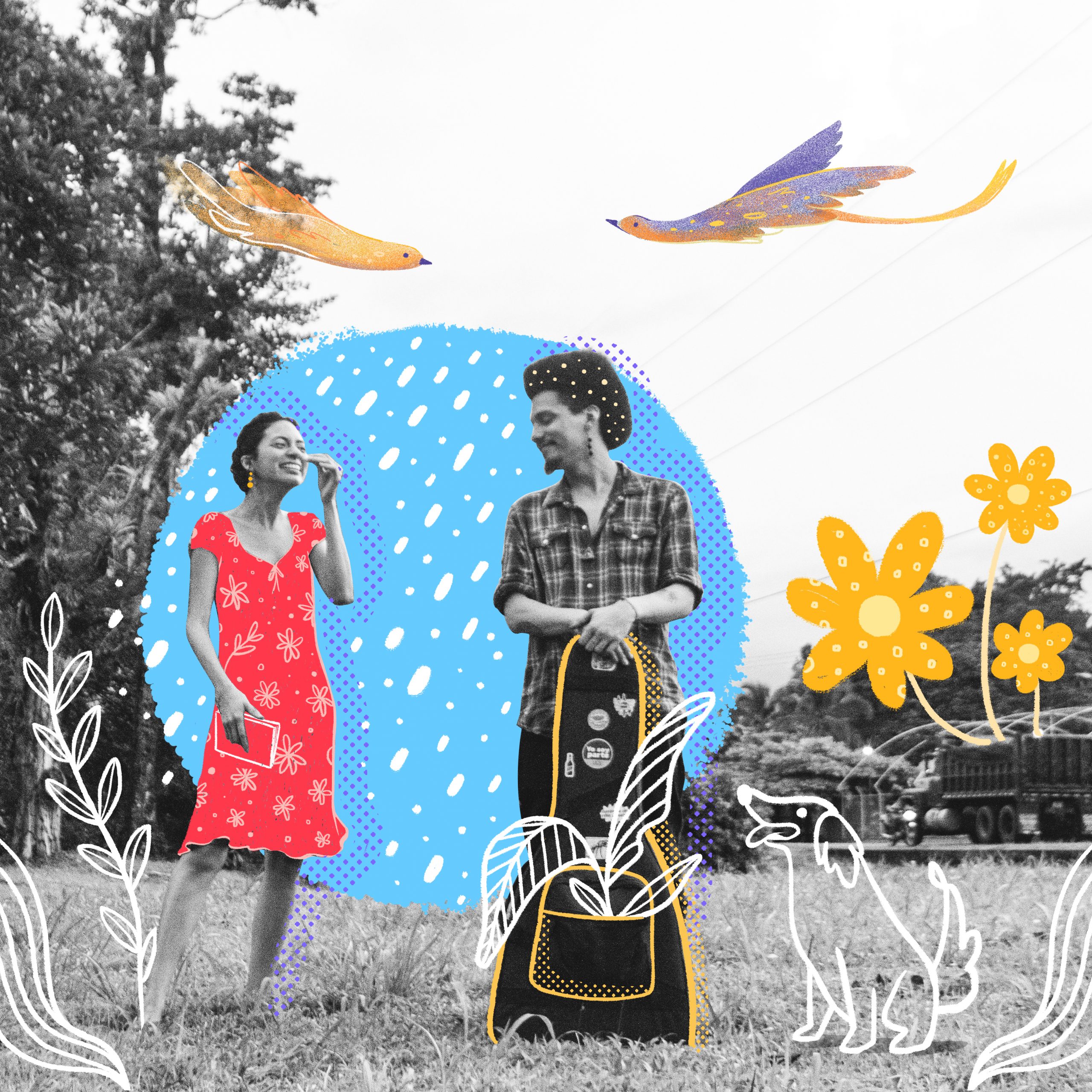
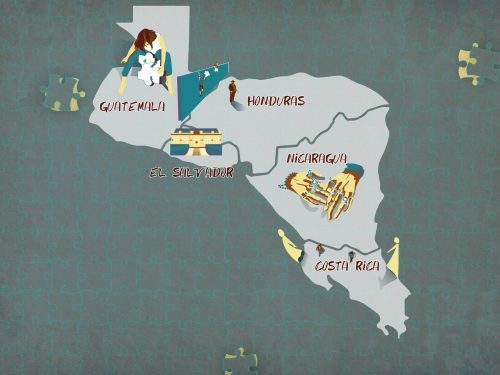
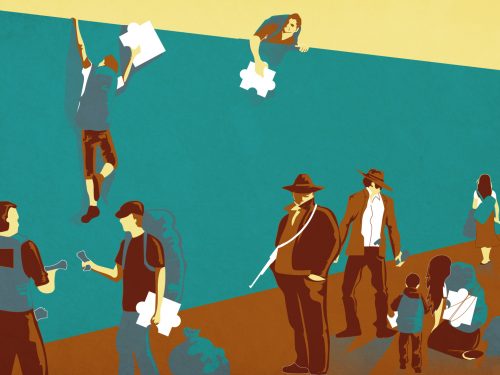
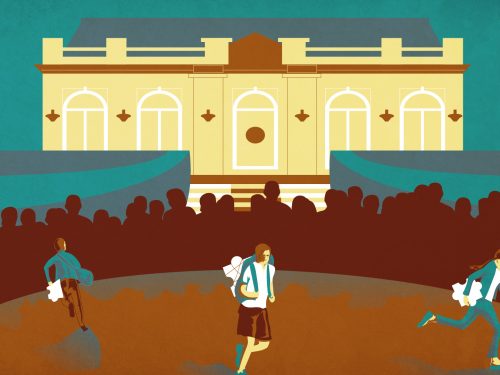

Comments